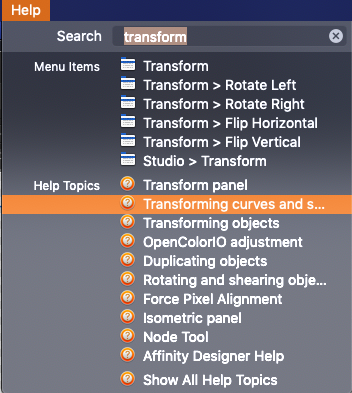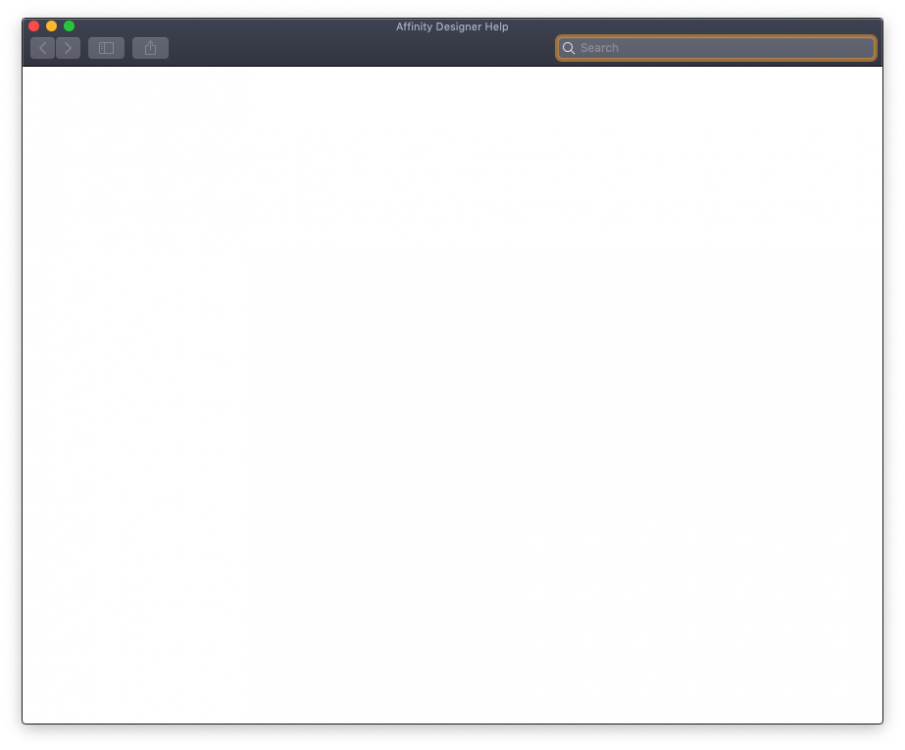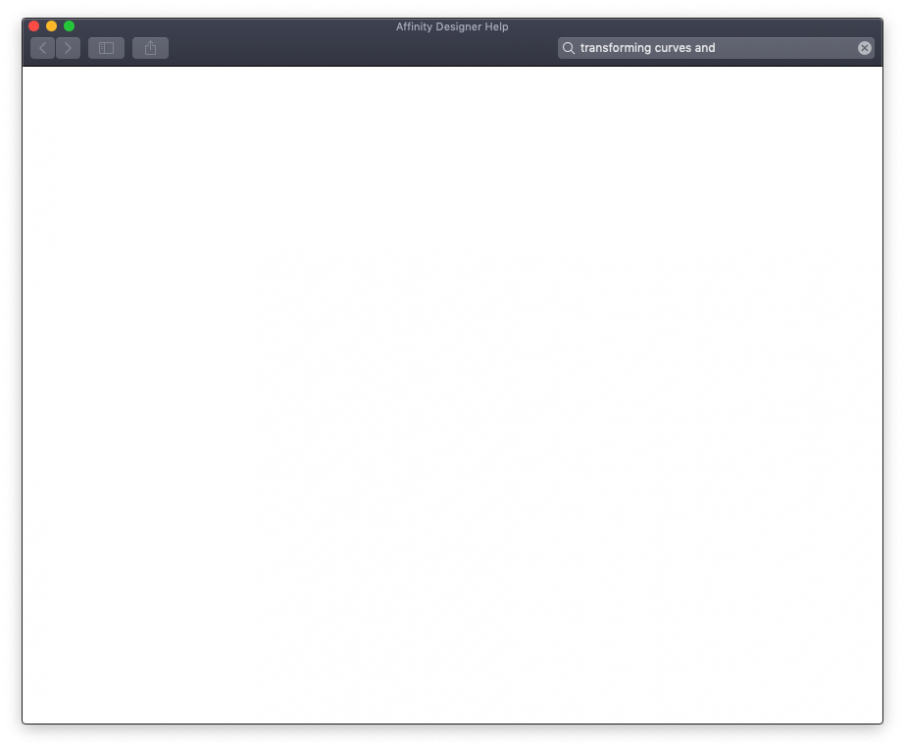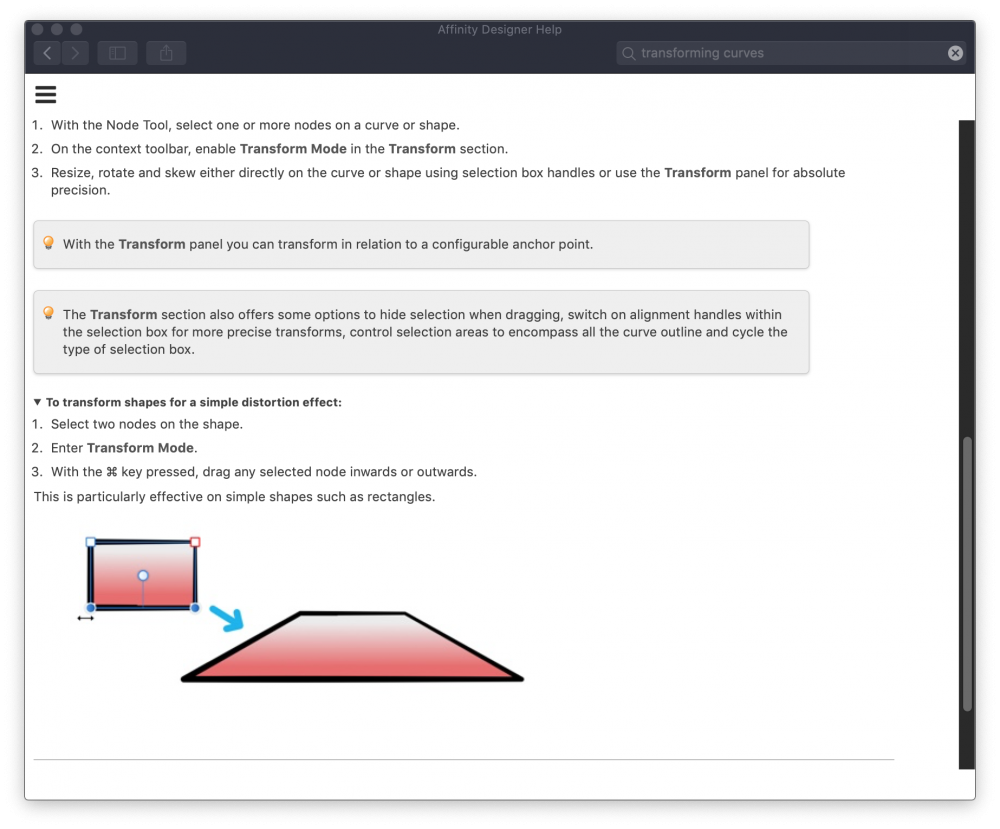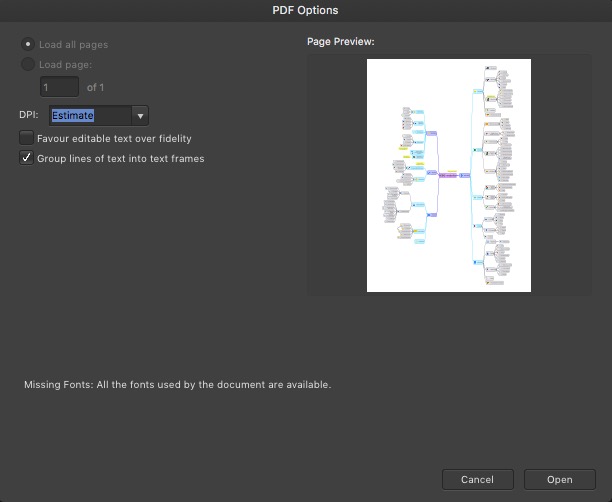-
Posts
188 -
Joined
-
Last visited
Everything posted by BatteriesInc
-
I love the entry 'Create QuarkXPress Project from PDF (open PDF)' - nobody outside of QuarkExpress users would need that so that's really laying it on thick.. The 'create Android/iOS app' thing I don't quite get. Who needs this? However, I have been unable to find an iOS/iPadOS/tablet version of the product, so you could add that to your list, and maybe have a look at integration of vector design/photo editing/publisher chain - standard with Affinity. I don't know how QuarkEXpress behaves on a system, but the almost viral way in which Adobe products install on a Mac was the core reason I decided to completely end its use. It's almost a virus in how hard it is to totally eradicate it from a system. If we're talking about security you could take Adobe off the list completely in my opinion (also because of how many security updates it needs). As for graphics features, I leave that to the experts. I'm a mere 'occasional use' amateur..
-
I'm hoping that someone can just point me at a setting that I have missed, but I need to pick up the contents of a WiFi QR code from a file. The moment I change focus to that file (open in Coteditor), the entry window for the QR code contents vanishes. When I move the focus back to Affinity Designer is briefly shows up, then vanishes leaving the QR code contents unchanged. Is there a way to just leave every window of Affinity open while changing focus? I've never been a huge fan of that window hiding idea anyway, but I can't find the right setting in that vast array of options to disable it. Not to start an endless discussion, but that's a UI 'feature' that I have never been a fan of. But I digress. Alternatively, it would be cool if the QR contents window just stayed where it was on focus return 😋. Maybe it's hiding behind other windows, but I couldn't find it and I don't want to have to close quite a number of windows just to unearth it - I was hoping I left that behind with Windows.. Please accept my apology if that's already been answered somewhere (maybe it's very basic) but I couldn't find it in search. MacOS Sequoia 15.5, Affinity Designer 2.6.3.
-
You haven't heard from me for ages - I'm not a "pro" designer and, to be frank, the Affinity trio I have on my MacBook (Designer, Photo and soon to be used in depth Publisher) pretty much covers my needs. But .. I did come across a number of occasions where illustrations were supplied in pixel format by people who have drawing talent but have as yet not woken up to the benefits of vector drawing (or just like freehand - some people I know create magic with just a pencil). It's at that point I had to use brew to install inkscape because there's no auto-trace available in Designer (I used brew because the MacOS DMGs tend to lag a bit). Therefore, please count me as another vote for this feature. I know the "Affinity Way" is to go miles beyond the original concept which will take time, but I'd be quite happy to have at least the basics around. Until then, inkscape it is..
- 499 replies
-
- designer
- vector conversion
-
(and 1 more)
Tagged with:
-
Hi, I have AD 1.6.1 on MacOS Mojave 10.14.3, and when I tried looking up Help on transforming (as I need the one thing missing in the default shapes, a parallelogram) I got.. well, nothing. Is this me or is there something broken here? Is this not-help stored locally or does it have to be pulled in from the Net (in which case it isn't)? First I used the pulldown menu, and I drew a blank after selection of the topic that appeared viable to me. Next I re-entered the search term in that window I got and got something which after a mouse click led me to .. .. nothing again. Don't get me wrong, I like the minimalism but it's just a tad unhelpful. I also have AD beta 1.7.0.4 installed which DID give me an answer after some prodding (screenshot added), so I'm guessing that's what I'll have to use for the moment. Bug, feature or me? (BTW, not to worry about the parallelogram, that turned out to be as stupidly easy as I was suspecting - no need for transformations ) Cheers, Binc
-
Ah, that worked, thank you. I'll work out at some point what actually happened. Ah yes, history. I put a feature request in, asking if it was possible to add an option so you choose the default on/off condition for a new document. Especially when you're experimenting or when you have to share work with someone else it makes sense to have that default set so you can't forget it.. Thank you for the help! Kind regards, Binc
-
Hi, I drew a simple donut in 3 segments, once by rotating a 120º segment, and once by adjusting the parameters of three donuts on top of each other, which was considerably more effort (not sure which is better but I wanted to test both). I then added puzzle ends (thank you for the instructions on this forum) and did a subtraction of each segment so I had the cutouts - or so I thought. One segment has a line left, and I have as yet not worked out how to delete that line. It's probably something insanely obvious to all you experts, but for the moment I'm stumped. Observe in the attached the cutout in the left segment. I copied and moved it to the right so you can see that the cutout has a line still closing the shape - and I can't get rid of it. None of the other substractions produced this aberrant extra line, and I seem to be unable to zap it. Now I can probably find a way to cheat this into behaving, but I prefer finding out where I made the mistake so it won't happen to me next time and learn more about how vectors work. Anyone? do-nuts.afdesign
-
As I am working through some tests and your workbook, I have come to appreciate the ability to stop working on something and resume later. The problem: I always have to manually set "Save history with document". I would greatly appreciate a Preference setting so this can be temporarily set as a default. I know it makes files a lot bigger, but for some projects it's worth it and I can always save once with it disabled to remove the history from the file. Cheers, Binc
-
I've been so busy that I haven't had time to deal with the "you must update your CUDA driver" message that appeared since the latest MacOS update (and for which there are apparently non-Apple solutions), but it did raise an interesting question: does the Affinity code also use this driver to speed up processing, and, if so, does that still work with this sort-of-bug-that-nobody-seems-to-claim? I like the idea of using all the horse power in a machine to make things go faster - heck, I like anything that goes faster - so I'd be interested if fixing what is at present just a nuisance may help the application along. Call it an extra motivation to find an answer, it may otherwise be with me for another half year
-
As I see light bending around me I think I've gone into dense mode again - would you care to take me through this step by step? Or better, I'm going to stop for the evening. I'll probably get this tomorrow morning when there is again blood in my caffeine - thanks already. That said (being the stubborn type), I still think that text on a path needs a lot of help. These hidden dependencies on underlying facets only make sense in one particular way of working, but otherwise they get in the way. Call me picky, but I like controls and dependencies where I can see them. While I'm at it, is there is a simple way to turn text upside down in a shape? I reckon that would take care of 50% of my battles :). Cheers, Binc (PS: re. the "covered in bees", I was listening to Eddie Izzard at the time ).
-
Argh. Created 3 x 120º segments (yes, to form a circle, thank you ) that were to hold text. I then spent the next half hour fighting the evil "text on a path" demons again, so eventually I gave up and created three plain circles so *I* was in control instead of whatever creation method was at the heart of a shape. Is there no way to tell a text on a text path to ignore the previous history of the shape that created the path (read: being flipped, rotated, mirrored, turned inside out and covered in bees - ANYTHING) and offer some options to solely make the TEXT flip, go into mirror mode, write backwards or upside down? As in controlling the actual component you are working instead of a hard and mostly invisible dependency on the characteristics and previous life of the underlying shape that created the path? I think adding that control to the text part would IMHO rather massively reduce the pain of text on a path. The present approach basically forbids the use of any normal shape manipulations such as flipping and mirroring because you end up paying dearly for that later when you convert it to a text path. You cannot flip or mirror the text on its own as you end up flipping the shape with it, which you then have to undo the effects of. Moving control to where it belongs ought to help. FFS_not_again.afdesign
-

Affinity Photo and Designer 1.6 have launched!
BatteriesInc replied to TonyB's topic in News and Information
If you've been using Designer or Photo for a while you will probably have switched off the Welcome Screen. Start Affinity Photo, go Help - Welcome and the popup will show. The big panel on the left is a 3 part slider - either wait or use the button on the side to go to the 3rd panel which has a button that takes you to the Affinity Site. If you haven't done so, you'll need to create an account (also for Designer downloads), but it's there that you'll find the free downloads. All packages come with an instruction PDF of how to install/use them and I believe even with video examples. For Designer the process is similar, but the link to the free goodies is on the SECOND pane instead of the third. If you've been using Affinity from v1.5 you'll find that you already have the Photo macros pack and the Designer grade-ui-kit - not sure if there has been any update to them since 1.5. So there -
You could use ImageMagick. Free, and available on all the main platforms. More GUI oriented might be Permute for Mac, which you can either get direct or via the SetApp packager. That's not the same as having it built-in to Affinity software, but it ought to get you going.
-

Distribute objects along path
BatteriesInc replied to telemax's topic in Feedback for Affinity Designer V1 on Desktop
This is where software/scripting would come in handy, I guess. -
The handling of meta data is a chapter in itself. If you read all the documentation on the site of Phil Harvey's exiftool you'll understand that meta data handling is far from trivial. I'd love to be able to set tags like "creator", "copyright" and "comment" tags from within AD/AP, maybe even in some automated fashion with versioning support, but it's a chapter on its own. Regardless of what you want to do with images, getting exiftool installed is probably an excellent first step - it's free, it's insanely powerful and its developer is well versed in the standards that apply. You may find a tag that supports your needs in the documentation, otherwise, adding to the "comment" tag may be an approach.
- 3 replies
-
- information
- properties
-
(and 4 more)
Tagged with:
-
Not a bug, more a wording issue (no drama ). I just cooked up a mindmap in SimpleMind, and as that doesn't have titling I usually "print" a map to PDF, then pull it into AD and add something manually. When I pull in the PDF, I get a warning which isn't: "Missing fonts: All the fonts used by the document are available" From a UI perspective it's generally advisable to only to display alarming text if there is cause. I would suggest to change that alert to "No missing fonts: All the fonts .." or just "All the fonts are available". Just a small detail.
-
- affinity designer
-
(and 2 more)
Tagged with:
-
I must apologise for the delay in answering this. I will come back to this but I have been a tad buried in work and look at the tools you mentioned (thanks for that ).
-
I was wondering if it would be interesting to create space for a notes field in the file properties (I'm aware I'm opening a can of worms there, IMHO there should also be room for data such as creator, company and copyright which then inevitably segways into a discussion about EXIF data too - allow me to stay away from that for now). I've seen someone talk about a description/information layer but that's inside the design, what I'm talking about is the ability to store meta data with the document which describes content, with or without tags and other fun stuff that you could actually search for if the search facility, file system or DAM supports it. At the moment, the only means to store data with a design is to add a box somewhere with some description or rely on a DAM to add external tags to a file which can get lost and which do not travel with the file in a makeshift collaborative environment. Ironically, document properties are a default feature in wordprocessors such as MS Office and LibreOffice which are the one facility that needs it less because you can actually search in the file contents - no such luck with graphics.. Opinion?
- 3 replies
-
- information
- properties
-
(and 4 more)
Tagged with:
-
I'm coming into this a bit late, and I can't give you a graphics pro perspective because I'm not one. However, as the average user who sometimes has to venture into the domain of design, you need tools to translate your needs and/or *cough* inspiration into results. For a pro who has invested countless man hours into getting up to speed with Adobe and who can afford it, Adobe products may be a good choice. For someone like me and others who entered into graphics later, going for Adobe instead of Affinity's AD and AP would be at best questionable. That is not just because of the high cost & long UI learning curve* but also because of the far more modern approach which maximises the use of the resources that a modern computer offers (the feedback on Metal performance, for instance, is rather impressive). Affinity's products allow me to quickly produce something useful at what I frankly consider to be a no-brainer cost (a total cost of under £100 for both makes it pretty much a default component of the system build when we are going to set up new offices), without penalising me for not having the time to build up UI expertise. I don't have to dig through six different websites and watch 20 Youtube videos to get something done, what I need is usually right on the surface or demonstrated in a Vimeo video (preferred over Youtube, but I digress). If I can't find something I have access to a forum that the company itself actively reads and participates in. So, from my perspective and most of the people I work with, Affinity makes just about the best tools for the job. Are they perfect? Well, if there is an idea for a feature they actually listen (which may in itself be of sheer therapeutic value for the married people amongst us ), and if there is a problem they go and investigate pretty quickly - I honestly don't think one can ask for more. So from my perspective, I'm happy with what exists and excited about what is coming next. So there * One of the major issues with GIMP as well.
-
Umm, maybe a too obvious question but will files created in 1.6 Beta <n> later open in 1.6 <production>? My preferred approach to testing something is to use it (hence my earlier questions about the ability to clone the full 1.5 environment including installed brushes, palettes et al into the 1.6 beta). I'm not a pro, so I can afford to lose work (not too much, though, but it isn't as much of a drama in both time and finance), but at the same time I don't want to have to replicate effort without a good reason..
-
The idea is indeed to edit the images (although I have to add I'm not the source as I'd take separate shots - the idea is to be able to handle anything coming in from third parties), but the issue was that AP in panoramic mode has facilities and tools that are exclusive to that mode, not accessible in any other way. Hence the wish to find a way to "encourage" it to switch into that mode when opening a panoramic image. From what I hear that's not possible, I assume that during assembly some kind of mapping is created for the panoramic mode that an externally sourced pan shot doesn't supply. Interesting is that I have failed so far to find any other application that comes even close to what AP can do with panoramic images, hence me hoping for answers. Oh well. Can't win them all.



